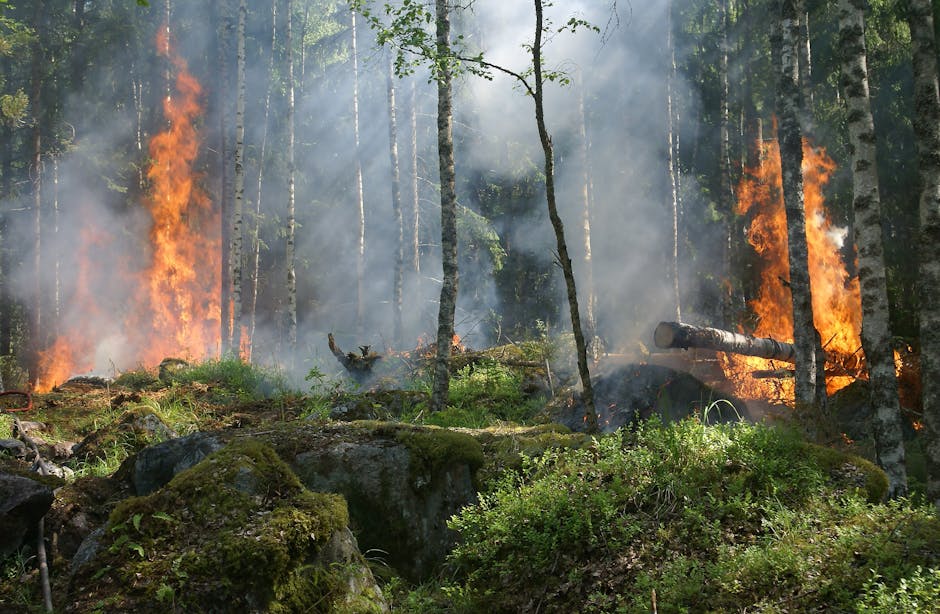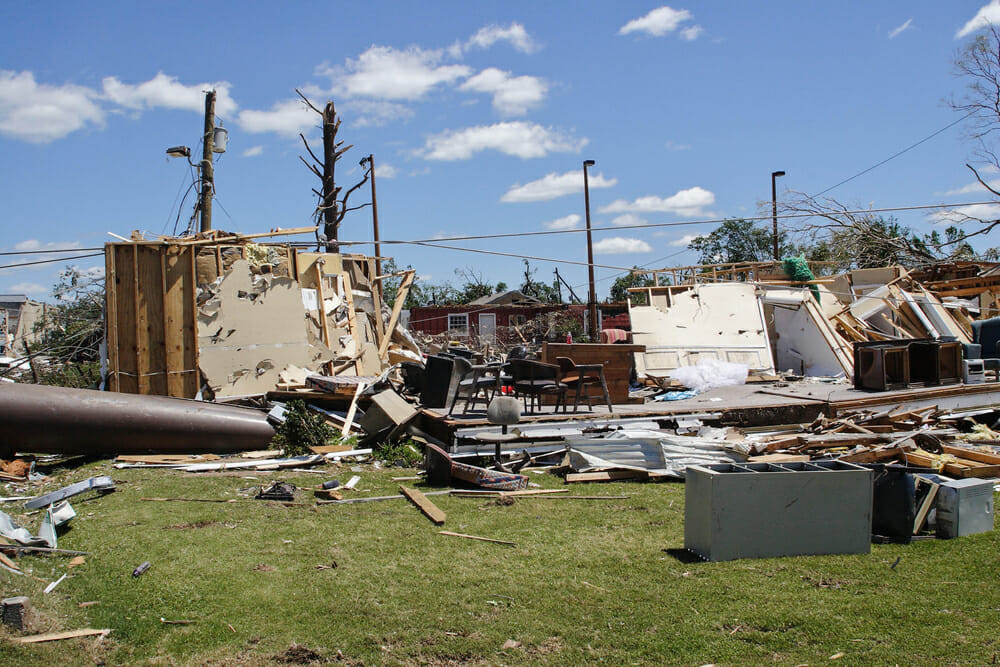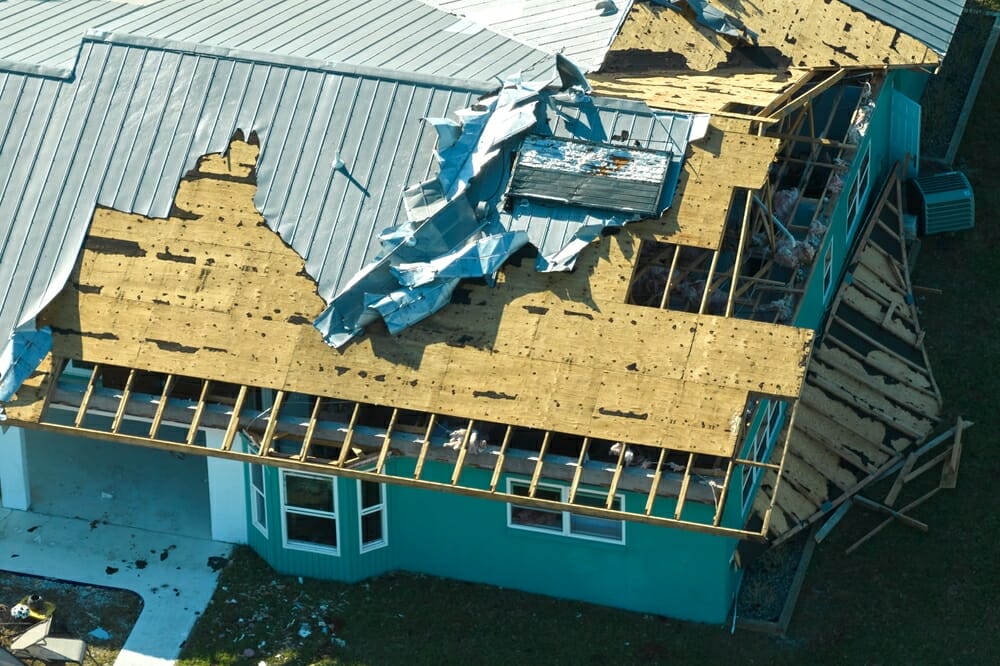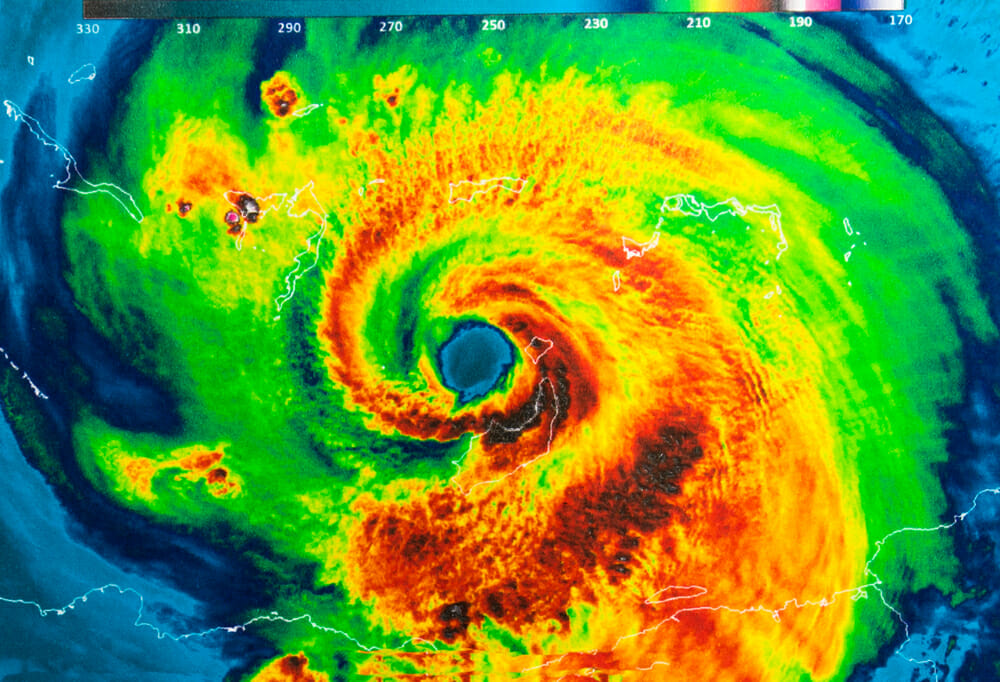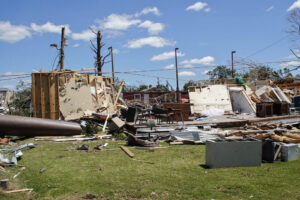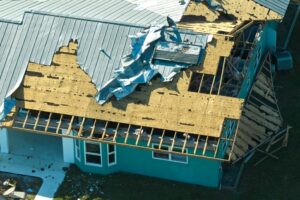Introduction
Panhandle texas fire recently marked its place in history as one of the largest wildfires in Texas. This catastrophic event has not only reshaped the landscape but also the lives of countless individuals and communities across the region. If you are a property owner or manage properties that have been affected by these fires, understanding your next steps—including crucial safety measures and navigating insurance claims—is essential.
The wildfires, including the record-breaking Smokehouse Creek fire, have scorched over a million acres, impacting multiple counties and prompting discussions on effective fire safety protocols and preparedness. As the fires continue to be contained, the focus shifts towards recovery and rebuilding, emphasizing the importance of being well-informed and prepared for future incidents.
For property owners and managers, particularly those overseeing commercial buildings, multifamily complexes, or community institutions, knowing how to ensure safety and promptly address the financial aspects of fire damage is crucial. This involves steps like documenting the damage thoroughly, understanding your insurance coverage, and potentially seeking assistance from professionals like public adjusters to navigate complex claims.

Understanding the Panhandle Texas Fire
The Panhandle texas fire, specifically the Smokehouse Creek fire, has etched its name into history as the largest wildfire Texas has ever seen. Originating near Stinnett in Hutchinson County, this colossal fire has consumed an overwhelming area of approximately 1.1 million acres, an expanse larger than the state of Rhode Island. The fire’s rapid expansion was fueled by dry, windy conditions, which are prevalent in the region around Amarillo and the broader Texas Panhandle.
The Role of Texas A&M Forest Service
The Texas A&M Forest Service has been instrumental in battling this unprecedented blaze. Their efforts have been focused on containment, which stood at 89% as of the latest updates. This significant containment rate marks a stark improvement from just 37% in prior weeks. The service has utilized advanced techniques and tools, including drones with thermal imaging piloted by firefighters, to identify and address hot spots, preventing further spread.
The Impact and Response from Xcel Energy
Xcel Energy, the power company servicing this region, has acknowledged that its facilities may have played a role in igniting the Smokehouse Creek fire. Although they dispute claims of negligence, the company’s involvement highlights the complex interplay between infrastructure and wildfire risks. This situation underscores the critical need for stringent maintenance and operation standards for power lines, especially in fire-prone areas.
Stinnett and Amarillo: Community Impact
The communities near the fire, particularly Stinnett and Amarillo, have faced significant challenges. In addition to the immediate threat of the fire, the long-term economic and environmental impacts are profound. Amarillo, being close to the action, has served as a central hub for firefighting efforts and community support activities.
Historical Context and Future Implications
This event is not just a standalone incident but a stark indicator of the escalating wildfire challenges facing Texas, likely exacerbated by climate change. Historical data from the state climatologist’s office has shown a warming trend in Texas, with an average temperature rise of 0.61 degrees Fahrenheit per decade since 1975. Such changes contribute to longer and more intense fire seasons, emphasizing the need for preparedness and adaptation strategies.
For those living in and around areas like Amarillo and Stinnett, the Panhandle texas fire serves as a critical reminder of the power of nature and the importance of robust response mechanisms. It highlights the essential roles played by entities like the Texas A&M Forest Service and energy providers such as Xcel Energy in managing and mitigating the effects of such disasters.
Understanding the dynamics of this fire, its causes, and its containment will be crucial in preparing for future incidents. For property owners and managers, particularly those overseeing commercial buildings, multifamily complexes, or community institutions, knowing how to ensure safety and promptly address the financial aspects of fire damage is crucial. This involves steps like documenting the damage thoroughly, understanding your insurance coverage, and potentially seeking assistance from professionals like public adjusters to navigate complex claims.
Preparing for Wildfires in Texas
When living in Texas, especially in areas like Amarillo, Lubbock, and San Angelo, preparing for wildfires is crucial. Below are practical steps to ensure you’re ready if a wildfire approaches.
Evacuation Plans
Know your routes: Have multiple escape routes from your home and community. Practice these routes to ensure everyone in the family knows them.
Stay informed: Sign up for local alerts to receive real-time updates during a wildfire. Knowing when to evacuate can save lives.
Emergency Kits
Pack essentials: Include water, non-perishable food, medications, and important documents in your emergency kit. Also, consider needs like pet supplies and baby items.
Keep it accessible: Store your kit in a location that is easy to reach in case you need to leave quickly.
Property Protection
Create defensible space: Remove flammable materials from around your home. This includes trimming bushes, clearing dead leaves, and moving firewood away from structures.
Choose fire-resistant materials: When building or renovating, choose materials that can help resist fire. This can include fire-resistant roofing, siding, and decking materials.
Fire-Resistant Materials
Using fire-resistant materials in construction can significantly reduce the risk of fire damage. For example, installing a metal roof or using stucco for exterior walls can prevent flames from spreading.
Amarillo and Lubbock: These cities are known for strong community efforts in fire safety. Local fire departments often provide resources and guidance on how to protect your property.
San Angelo: The fire department here offers personalized fire safety assessments for homes, helping identify potential hazards and suggesting preventive measures.
By taking these proactive steps, residents in Texas can better prepare themselves and their properties against the threat of wildfires. Preparation today can prevent loss tomorrow. We’ll explore how to navigate insurance claims after a wildfire, ensuring you are adequately compensated for any damages incurred.
Navigating Insurance Claims After a Wildfire
When the Panhandle texas fire devastates, navigating your insurance claim is crucial to rebuilding your life and property. Here’s a straightforward guide to help you through this complex process.
Documentation: Your First Defense
Start by documenting all damages as soon as it’s safe to do so. This means taking clear, detailed photos and videos of the affected areas—both interior and exterior. Include shots of:
- Burned structures and land
- Damaged personal belongings
- Any remaining debris or hazards
This visual evidence is powerful and supports your claim, ensuring you capture the full extent of the damage.
Immediate Steps: Act Quickly
Contact your insurance provider immediately after the event. Provide them with your policy number and a brief overview of the damage. Early contact initiates your claim process and sets the foundation for a smooth adjustment period.
Public Adjuster vs. Insurance Claim Adjuster
Understanding the difference between a public adjuster and an insurance claim adjuster is vital:
- Insurance Claim Adjuster: Works for the insurance company. Their role is to assess the property damage and offer a settlement based on the policy’s terms.
- Public Adjuster: An independent adjuster who works for you, helping to negotiate the best possible settlement. They can be particularly beneficial if you feel overwhelmed or unsure about the claims process.
Insurance Claim Recovery Support: Your Ally
If you’re in Austin, Dallas, Fort Worth, San Antonio, or Houston, Insurance Claim Recovery Support is your ally. They specialize in helping policyholders navigate the complexities of fire damage claims. Their services include:
- Assessing the full scope of damage
- Negotiating with insurance providers
- Ensuring that your claim is fairly valued and compensated
Quick Recap
Here are the steps once again for quick reference:
- Document everything meticulously.
- Contact your insurer as soon as possible to begin the claim process.
- Consider hiring a public adjuster if the process seems overwhelming or if the settlement offered doesn’t seem fair.
Navigating insurance claims after a wildfire can be daunting, but with the right information and support, you can ensure a fair and efficient resolution. Insurance Claim Recovery Support is here to help residents of major Texas cities manage their claims and maximize their settlements after the devastating Panhandle texas fire.
Let’s look into practical safety tips that every Texas resident should know to protect themselves and their properties from future wildfires.
Wildfire Safety Tips for Texas Residents
Wildfires in Texas, particularly in regions like Lubbock, Waco, Round Rock, Georgetown, and Lakeway, require residents to be proactive about safety. Here are essential tips to keep your family and home safe from the threat of wildfires.
Smoke Alarms: Your First Line of Defense
Ensure you have smoke alarms installed on every level of your home, inside bedrooms, and outside sleeping areas. Test them monthly and replace batteries annually. A working smoke alarm significantly increases your chances of surviving a deadly fire.
Creating a Defensible Space
Defensible space is critical in minimizing fire damage. Clear dead plants, grass, and weeds within a 30-foot radius around your home. Use fire-resistant plants and materials in landscaping. This space acts as a buffer, slowing the fire’s spread and providing firefighters a safe area to operate.
Keep Emergency Contacts Handy
Prepare a list of emergency contacts including local fire departments, medical facilities, and a direct line to entities like Insurance Claim Recovery Support. Ensure everyone in the household knows where this list is located and how to use it.
Engage with Local Fire Departments
Residents of cities like Lubbock and Waco can benefit from community programs offered by local fire departments. These include fire safety assessments and educational workshops that teach fire prevention techniques and what to do in case of a fire.
Utilize Community Resources
Cities such as Round Rock, Georgetown, and Lakeway provide community resources aimed at enhancing fire preparedness. This includes easy access to fire hydrants and promoting the installation of smoke alarms and fire extinguishers in homes.
By incorporating these safety measures, residents can significantly reduce their risk of fire damage and ensure a quicker response in emergencies. Preparation today can prevent a disaster tomorrow. As we continue to support recovery efforts in the Panhandle, staying vigilant about fire safety remains a top priority for all Texas residents.
Supporting Panhandle Fire Recovery Efforts
Relief Funds and Community Support
In the wake of the devastating Panhandle texas fire, the community and various organizations have rallied to provide much-needed support. Over $800,000 in donations were raised for the State Agriculture Relief Fund, managed by the Texas Department of Agriculture. These funds are crucial for helping farmers and ranchers rebuild their lives and businesses.
Livestock Support Initiatives
The impact on livestock has been particularly severe, with many cattle lost to the flames. The Texas and Southwestern Cattle Raisers Association has been instrumental in coordinating efforts to support affected ranchers. Local communities in Amarillo, Canadian, and Borger have set up areas to donate livestock supplies, providing a lifeline for the animals that survived.
Arthur Uhl, president of the association, highlighted the tragic loss, noting, “Unfortunately, many of the livestock that were killed are either cows with their calves, or pregnant cows.” This statement underscores the urgent need for ongoing support in the region.
Community Rebuilding Efforts
Rebuilding efforts are not just about physical reconstruction but also about restoring the spirit of the communities. In Canadian, efforts are underway to raise funds for the Canadian Future Farmers of America to rebuild a barn that was lost in the fire. This project not only aids in recovery but also invests in the future of agriculture in the area.
In Borger, the U.S. Small Business Administration has set up disaster loan outreach centers. These centers are crucial in helping local businesses and individuals navigate the complex process of recovery, ensuring they have the financial support needed to rebuild.
Collaborative Efforts for a Stronger Future
The collaboration between local governments, state agencies, and community organizations exemplifies the strength and resilience of the Texas spirit. As Monty Dozier, director for disaster assessment and recovery at Texas A&M AgriLife, noted, the land’s recovery might be slow, but there is hope as “seedlings are trying to spring back up.”
The focus remains on supporting these recovery initiatives and ensuring that the affected communities in the Panhandle have the resources they need to rebuild stronger and more resilient than before. The road to recovery is long, but with continued support and collaboration, the Panhandle will thrive once again.
Conclusion
As we turn our focus towards recovery and rebuilding, Insurance Claim Recovery Support is here to ensure that those affected by the Panhandle texas fire receive the support and advocacy they need during their insurance claims process. Our commitment is to maximize settlements and provide comprehensive assistance across Texas, from Amarillo to Houston and beyond.
Maximizing Settlements
At Insurance Claim Recovery Support, we understand the complexities of fire damage claims. Our expertise allows us to navigate the intricacies of insurance policies to secure the fullest possible compensation for your losses. By meticulously documenting the extent of the damage and arguing effectively on your behalf, we ensure that you receive the maximum settlement. This allows you to focus on what truly matters—rebuilding your life and your community.
Advocacy for Policyholders
Our role extends beyond just filing claims; we advocate passionately for our clients. Facing a disaster like the Panhandle texas fire can feel overwhelming, but you don’t have to face it alone. We stand by your side, offering expert advice and fighting for your rights with insurance companies. Our goal is to alleviate the stress of the claims process, making it as smooth and straightforward as possible.
Statewide Service
No matter where you are in Texas, our services are available to you. We cover a wide range of areas including Austin, Dallas, Fort Worth, San Antonio, and Houston, ensuring that every Texan has access to professional and reliable claims support. Whether your property is in the heart of a major city or a remote part of the Panhandle, our team is ready to help.
As we close this guide, recovery is a journey. With Insurance Claim Recovery Support by your side, you have a dedicated partner who will guide you through every step of the process. For more information on how we can assist with your fire damage claims, visit our fire property damage service page.
Together, we can navigate the challenges ahead and rebuild stronger than before. In the face of adversity, you’re not alone.

